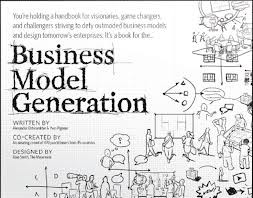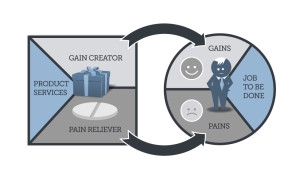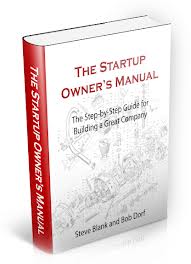The Best Approach to Developing Compelling Customer Value Propositions

Identifying what customers really want (and do not already have in abundance) is one of the biggest challenges in any business.
Identifying what customers really want (and do not already have in abundance) is one of the biggest challenges in any business.
Millions of start-ups are launched every year all over the world on the hunch that there is something customers really want and currently cannot get.
Even the market leader who is busy fulfilling demand and the company in a tornado investing like crazy to meet galloping market demand will consider “what’s next?”
Further, companies who are in business and do meet customer demand for products and services will consider how they can repackage and re-communicate their messages to become more relevant to more customers.
As the number of companies started each year is equal to the number of companies dying each year, and as more than 100 millions businesses are started and closed each year we are talking about a very, very big issue.
Innovators, consultants and academics have been struggling with finding systematic approaches to this challenge. Is there a linear approach to develop compelling Customer Value Propositions?
Jobs to be done
In the 1960s, Theodore Levitt said, “People don’t want a quarter-inch drill, they want a quarter-inch hole.” His point was: People pay for products and services to accomplish a task or achieve a goal. We call these tasks or goals “jobs-to-be-done.”
People execute tasks all the time in their business and personal lives. Some tasks they can accomplish using personal skills, brainpower, and physical strength. Other tasks require something you do not already have or have access to. For these tasks, people turn to products and services for help. The jobs-to-be-done theory explains that the reason why products are created and why people use them are one and the same: people buy products and services to get jobs done.
 Quite simple: To be a market leader, companies must create products, services, and software solutions that help customers get their jobs done better than competing solutions.
Quite simple: To be a market leader, companies must create products, services, and software solutions that help customers get their jobs done better than competing solutions.
The tricky part is that you cannot ask the customers what they want and then get the right answers. If Apple had asked their customers what they wanted we would never have seen the iPod, the iPhone, the iPad, iTunes, the App Store etc. The majority of people do not have the imagination to envision dramatically new and different ways to approach a known task. Even fewer people respond enthusiastically to new products and services until they have actually seen them and seen them used by other people.
Asking people what they want is a excellent approach to improve your position and competitiveness in a “Red Ocean.” However, it will not get you into a “Blue Ocean.”
The NABC approach
In 2006 Curtis R. Carlson and William W. Wilmot from The Stanford Research Institute (SRI) published the book “Innovation: The Five Disciplines  for Creating What Customers Want”. The book introduced the NABC approach – a linear and structured way to identify and develop what customers want. (NABC is the abbreviation of Need, Approach, Benefit and Competition.)
for Creating What Customers Want”. The book introduced the NABC approach – a linear and structured way to identify and develop what customers want. (NABC is the abbreviation of Need, Approach, Benefit and Competition.)
Although the book is somewhat unstructured and anecdotal it did help to give the NABC approach some awareness worldwide, and larger organizations traveled to Menlo Park in the Silicon Valley to learn about the approach and to get help applying the framework.
You can find more on the NABC approach here: TBK NABC Fact Sheet
I can only recommend reading the book. It is an important step on the road to tame innovation and find a more direct path to create products and services providing genuine and appreciated value.
While NABC is an important step in the process of making innovation structured and linear it is still a very product focused approach.
Osterwalder’s Business Model Generation
 Alexander Osterwalder and Yves Pigneur published the book “Business Model Generation” in 2010. In the span of just a few years, the Business Model Canvas and the formats used by Alexander Osterwalder and Yves Pigneur have spread like wildfire all over the world.
Alexander Osterwalder and Yves Pigneur published the book “Business Model Generation” in 2010. In the span of just a few years, the Business Model Canvas and the formats used by Alexander Osterwalder and Yves Pigneur have spread like wildfire all over the world.
The book by Alexander Osterwalder and Yves Pigneur is completely different from the book by Curtis R. Carlson and William W. Wilmot. Whereas Carlson & Wilmot’s is a text, text, textbook, Business Model Generation is an illustrated cookbook: very little theory, many example, loads of practical step-by-step recipes and lots of pictures and illustrations.
The book promotes many messages at the same time, which makes it a little messy. I think very few readers make it past page 57 (the introduction to the canvas). Nevertheless Business Model Generation is a breakthrough in the management literature and has laid the foundation for the massive dissemination of the Business Model Generation approach.
The book has a major weakness. It is very thin on the subject of Customer Value Propositions. While the book is superior in explaining that a business is much more than just the product, it is superficial in addressing the challenges associated with developing products that customers really want (and do not already have in abundance).
Can the NABC approach fill this gap? NABC covers the product innovation part really well, but it also overlaps some of the other Business Model Generation building blocks. Unfortunately the NABC approach doesn’t really fit with Business Model Generation.
The Value Proposition Model Canvas
Osterwalder has recognized this need for a structured approach to develop Customer Value Propositions and has come up with the Value Proposition Canvas.
The Value Proposition Canvas is not as comprehensive as the NABC approach, but it fits better with the Business Model Generation framework.
Using the Business Model Generation framework, the Value Proposition Canvas and Mapping the Business Model Generation Design Space (Key Trends, Industry Forces, Market Forces and Macro Economic Forces), you have covered all the NABC areas and more.
Business Model Generation replaces the NABC approach
While it is still in the early days for the product innovation element of the Business Model Generation approach, we believe that this element will develop quickly. Osterwalder knows that there is work to be done and with his “open source” approach to concept development he has an army of people providing input and ideas.
 One of his supporters is Steven Blank who also ventured into the realm of illustrated management cookbooks with his recent “The Start-up Owners Manual.”
One of his supporters is Steven Blank who also ventured into the realm of illustrated management cookbooks with his recent “The Start-up Owners Manual.”
This is a brilliant book taking yet another step in the quest of making innovation structured, linear and affordable (target audience start-ups = small budgets).
Steve Blank invented the Customer Discovery/Development Process which includes the famous Get Out of the Building approach. This bit is now included in Osterwalder’s “Value Proposition Designer.” Small world.
“The Start-up Owners Manual” is not a book only for young entrepreneurs. It is a book for anyone who has not yet found a stable and scalable business model, and doesn’t that count for most businesses in this world?








